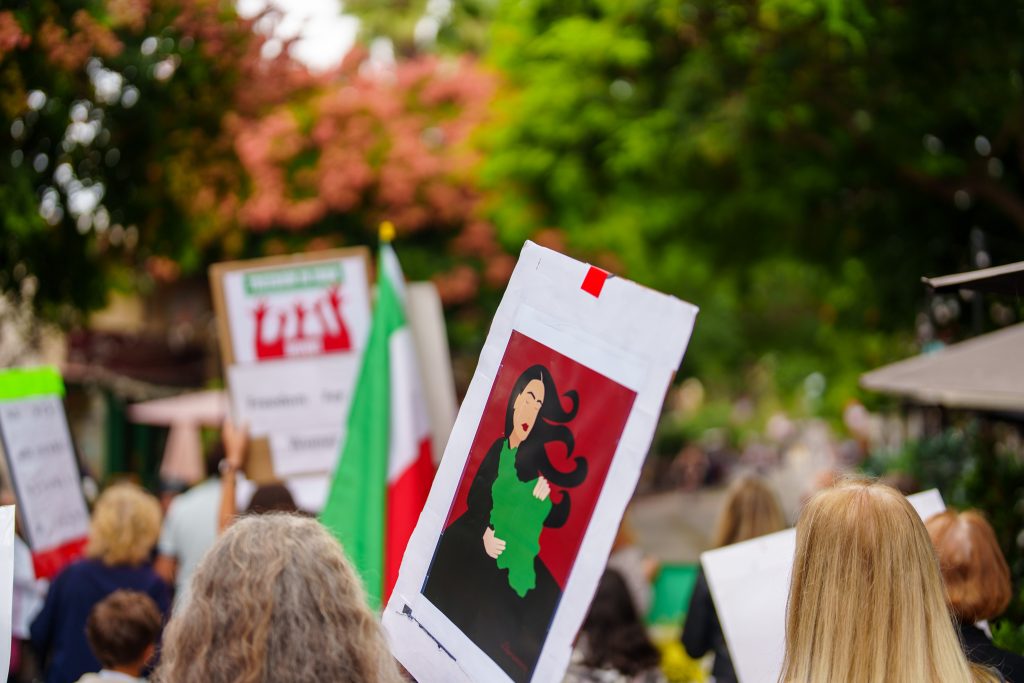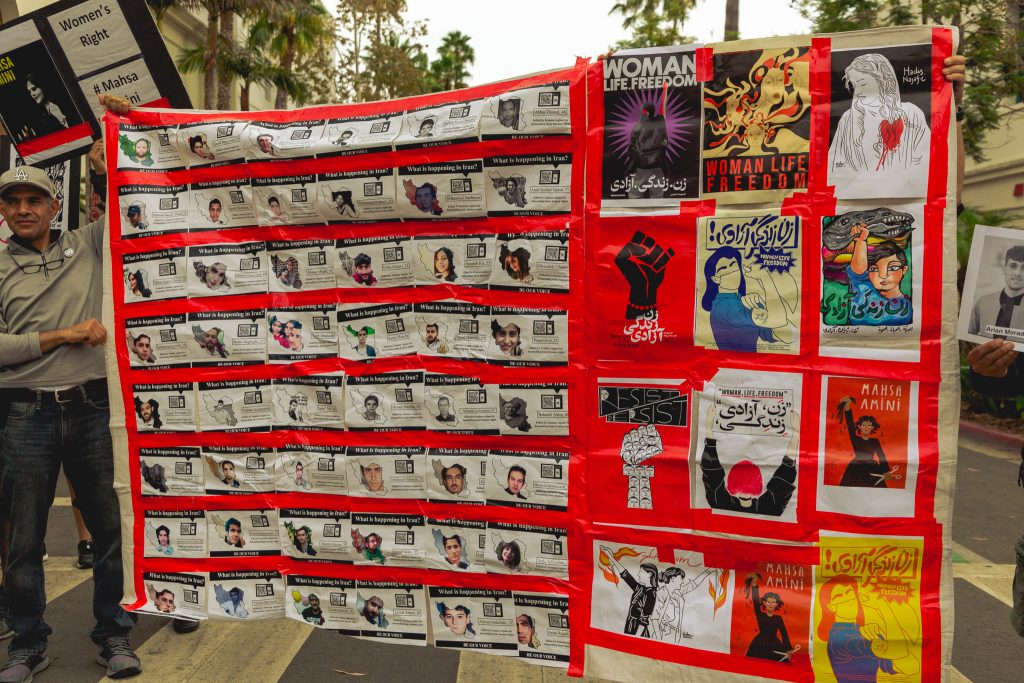Erick Aragon Alvarado
News Editor
Content Warning: This article contains references to sexual violence.
Five months after Mahsa Amini’s murder ignited a fiery revolution, the Iranian government continues its crackdown, sparing no one; however, The Bottom Line (TBL) sat down with modern Iran historian and UC Santa Barbara Professor Janet Afary for an interview in which she identifies cause for hope in the Iranian people’s increasingly progressive attitudes.
Afary explained that the progressive majority of Iran is making it impossible for the regime to stay in power by yet again stoking conservative fears.
“All the things that the government used to say, basically threatening that if the Islamic regime ended there would be a radical feminist movement … or that the ethnic minorities such as the Kurds would declare a nation, the Baháʼís are taking over … [that] this is America, this is Israel … the supporters of the shah are coming back, that [in] a secular-run society women are going to wear pants [or] they’re going to go to school … those things are not scaring people anymore,” Afary told TBL.
Women, in particular, consistently challenge the regime that would have them live as docile citizens or simply as a means for procreation. The fertility rate has dropped dramatically from 6.5 births per woman in 1979 to 2.1 in 2022. In increasingly large numbers, women are embracing contraception and premarital sex, expecting emotional intimacy and sexual pleasure in their marriages (as suggested by the increased divorce rate in Iran), or are simply not getting married.

Notably, women also constitute a sound majority of the 4 million university students in Iran, and the “shame” of being in public by themselves — perhaps to protest, for example — is no longer the taboo that it once was in the early 20th century.
Iranian men are witnesses to these changes, which could indicate that they have come to expect them and accept them into the greater culture of Iran. After all, men have been quite active in the revolution, willing to die for women’s rights. Men who protest often form protective human barriers around women who publicly unveil and burn their hijabs or gather to create protective chains on either side of women marching in the streets.
Shervin Hajipour recently won a Grammy for his song “Baraye,” which has become the anthem of the revolution. Its lyrics feature the favorite protest shout, “Women, Life, Freedom,” a slogan from the Kurds in Rojava, Syria, who drove out the Islamic State in 2017.
Urbanization may also play a prominent role in Iranians’ shifting attitudes toward themselves and the regime. Today Iran is 75% urbanized, and, as Professor Afary explains, “[In big cities,] you go to plays, you go to theaters, you hang out with people, you have better access to the internet and are therefore better connected to the rest of the world — so you change dramatically.”
Although the revolution remains leaderless, Professor Afary expects the leadership to come from the young people, saying, “I don’t think anybody is looking at anyone from the previous generation, whether it’s the shah and his family, whether it’s an old leftist organization [or] the National Front. The leadership is actually being made as we’re talking.”
TBL asked Professor Afary her thoughts about the length of the revolution, which has been going on for about five months now.
“[The] social movements of Iran which have succeeded usually have taken a few years. … So for example the Iranian Revolution, the beginnings of which were early 1977, and they succeeded in 1979. Same thing with the 1906 Constitutional Revolution [and the] struggle for nationalization of oil also took several years,” Afary told TBL.
Iran has a lot to accomplish before it can reach its goals. Women, for example, have realized that for there to be women’s rights, there must be democratic and human rights for everyone.

To illustrate this, Professor Afary drew on a comparison of feminist movements in the United States. American women who fought for sufferage at the turn of the 20th century, for greater access to the public sphere, and for greater equality, had a foundation from which they could work off of. They could refer to the 1776 Declaration of Independence, the 1788 Constitution, and the Bill of Rights. They drew on these documents to argue that rights which had been given to men were not given to women. Iranian women are living under a theocracy in which the Supreme Leader and the military hold most of the real power, and the Constitution is also a theocratic one.
Iran’s theocracy has certainly not held back its power these past few months. Thousands of people have been arrested — recently for simply dancing in public, which is illegal for women. The average age of the protestors arrested is only 15 years old. The regime has killed well over 500 people, and security forces are using the age-old tactic of rape and other forms of sexual violence against men and women as a method of deterrence. In Zahedan, the rape of a 15-year-old girl by a colonel sparked protests that resulted in over 90 protestors’ deaths, later named the Zahedan Massacre.
In spite of it all, the uprising continues. People still march in cities across Iran, while the theocracy is playing a tug-of-war it seemingly cannot win. The regime attempts to pull society back into an archaic form of government based on Sharia religious law while, for the past century, the people of Iran have been pulling in the opposite direction in order to pursue progressive ideas. Thus, even as the world begins to move on, Iran is nowhere near finished.

















